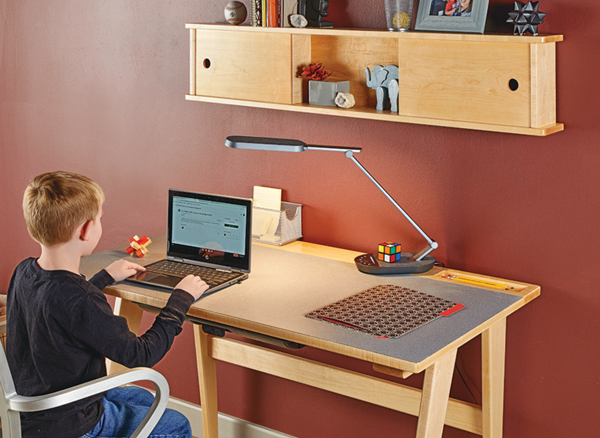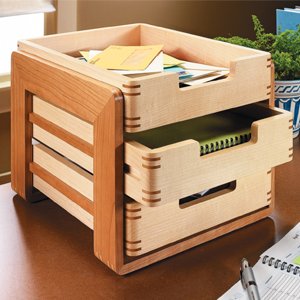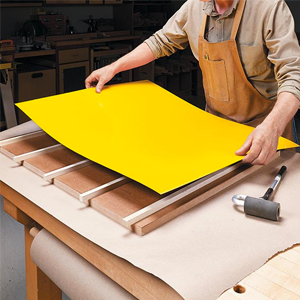 A home office holds great appeal in my mind. I picture a secluded room lined with bookshelves, a desk, a comfortable chair, and a window overlooking a forest. My reality holds something entirely different. It’s more like carving out space in the family room (or bedroom) to tackle the administrative tasks of the house. The kids also need a place to knock out homework without interruption.
A home office holds great appeal in my mind. I picture a secluded room lined with bookshelves, a desk, a comfortable chair, and a window overlooking a forest. My reality holds something entirely different. It’s more like carving out space in the family room (or bedroom) to tackle the administrative tasks of the house. The kids also need a place to knock out homework without interruption.
On this episode of the Woodsmith Shop, the cast builds a pair of work from home essentials: a desk and wall shelf combo. They’re designed to fit just about anywhere. Simple, robust joinery means you can build them in a short time and they’ll last for years.
While the desk has plenty of space to spread out, the support structure is lighter visually. The look is more contemporary than classical. Desks can take a beating, so this one has a plastic laminate top. It offers durability, for sure. But more than that, you can use it to personalize the look. There are so many colors, textures, and patterns that I’m sure no two desks will be the same.
The wall cabinet takes the place of packing storage into the desk’s base — which would create a more hulking project. The upside is all the things you need are close at hand. This wall cabinet is one of those projects that can find a useful place all around your house—or even as some handy storage in the shop.
Both projects are made from birch. What I like about birch is that it has the same clean, light maple coloring. However, it’s much easier to work with, especially if you enjoy using hand tools.
Watch the Episode: If the Woodsmith Shop isn’t on in your area, contact your local public television station. Or stream it here.
Download the Free Plan for this episode.
The legs on the desk are tapered to add some visual flair and lighten the profile. I usually cut tapers at the band saw and clean up the edges with a hand plane. However, a taper jig like this one makes the process efficient and consistent.
 Every office or desk could use a little help in taming the chaos. This three-tiered inbox (above) does that and allows you to spend a weekend in the shop, too.
Every office or desk could use a little help in taming the chaos. This three-tiered inbox (above) does that and allows you to spend a weekend in the shop, too.
The plastic laminate on the desk (below) is applied with contact cement. And the process is different than using wood glue. The advantage is that the glue sets up fast. The downside is that it sets up fast, but we've put together some tips for getting the best results.
 One Final Tip: If the laminate goes down out of place, there’s a way to recover. Pour lacquer thinner (or acetone) into the contact cement. The glue will soften and dissolve so you can remove the laminate. Once everything is dry, you can reapply the cement and start again.
One Final Tip: If the laminate goes down out of place, there’s a way to recover. Pour lacquer thinner (or acetone) into the contact cement. The glue will soften and dissolve so you can remove the laminate. Once everything is dry, you can reapply the cement and start again.












